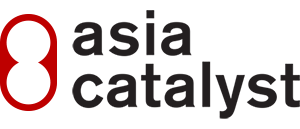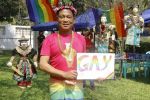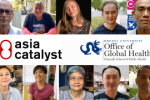By Shen Tingting
The Global Fund to Fight AIDS, Tuberculosis and Malaria (The Global Fund) is the world’s largest donor to projects fighting AIDS, TB and malaria around the world, and has been a key supporter of NGO responses to HIV / AIDS in China. In 2011 , the Global Fund withdrew its funding from several countries, including China, and is currently in the process of developing a new funding model. In “Opportunities and Challenges” below, Asia Catalyst Advocacy Director Shen Tingting introduces key components of that new model and possibilities for Chinese NGOs.
Opportunities and Challenges – Updates on Global Fund’s New Funding Model
Opportunities and Challenges of the Global Fund New Funding Mode —- Progress
January 2013
Asia Catalyst Shen Tingting
(Author combines the data and information, integration of the Global Fund reform progress following the Global Fund hopes to focus on civil society organizations to help if you have any questions, please contact:.. tshen@asiacatalyst.org )
As we all know, the Global Fund has been committed to the global prevention and control of AIDS, malaria and tuberculosis. The Global Fund in 2003 to enter China, the project covers 31 provinces and 3000 counties. In 2010, the Global Fund recipients in four countries (Djibouti, Mali, Mauritania and Zambia) found that the more serious financial abuse, which led to the Global Fund to launch a review of corruption and internal management mechanism reform. Meanwhile, the economic crisis led to a global fund can not raise sufficient funds to pay existing projects. 2011, after a series of assessments, the Global Fund decided to stop funding for some countries, including China, Russia, Mexico and Argentina. Because these countries have the capacity to meet their health needs, the Global Fund is also looking to invest can have a greater impact.
The Global Fund under the weight began to reform the existing order “round” as the basis of subsidy, the new funding model will have a strategic investment, focusing on epidemic heavier, poor countries’ ability to pay , while keeping the Global Fund global influence.
The new funding model framework:
* establishment of a “national team” (Country bands). Will be eligible for the Global Fund country into four national teams, a country can only enter a country team. Select country standards include the ability to pay and epidemic burden. Currently, the list of the various national teams has not been determined. It is understood that the fourth country team may be composed of moderate and high-income countries , these countries can apply for funds designated for centralized epidemic prevention and control, and high-risk groups such as edge-oriented projects.
* National Dialogue . This is the Global Fund and the Government, donors, partners and civil society-based national AIDS strategies and investment frameworks undertaken dialogue. Write a book project concept based on national dialogue and national AIDS strategy, the project for three years. Writer concept and application process should mobilize all stakeholders to participate.
* transitional period . To test the effects of the new funding model, the Global Fund will select a number of countries into the transition period. The selection criteria include: 2013–14 years few funded, the risk of service interruptions, funding can reach a relatively large impact, diversification and other countries. 5-7 transition countries will finance the project, in addition funded a non-CCM (Country Coordinating Committee) projects or regional projects (which will be explained). Through these pilot projects, the Global Fund to try to understand the new funding pattern appears in the operation of issues in order to further refine the model.
The Global Fund has published a list of countries with the eligibility criteria under the new funding model, China is not in the list of columns . This means that the Chinese government will not have the opportunity to submit the project application to the Global Fund, the Chinese government can not get any money. This is not to say that China’s non-governmental organizations did not apply for the opportunity.
In most cases, the project application submitted by representatives of national CCM. Under the new funding model, the Chinese CCM was unable to submit an application on behalf of the government to the Global Fund. But the Global Fund accepting applications other than CCM, but filing required to inform their national CCM:
1. Non- CCM applicants . The Global Fund in the following three cases will be considered for application of a non-CCM body (not necessarily non-governmental organizations) submitted by: 1) there is no legitimate national government; 2) conflict countries, faced with a natural disaster or state of emergency; 3) The Government repression of civil society, or not, and civil society partnerships.
2, regional application . You can submit a joint project application in several countries of the same region, in order to solve some problems facing several countries. Regional filing and managed by the Regional Coordination Mechanism (RCM). Can identity (such as infection Network, Network of Sex Workers) network and the network of other countries apply for funding cooperation.
Such as the Asia-Pacific AIDS Network successfully applied to the Global Fund 10, won the regional funding in seven countries (Nepal, Pakistan, Bangladesh, Laos, Vietnam, Indonesia and the Philippines) to carry out the project. Since Asia does not RCM, so Asia-Pacific AIDS Network to submit project proposals and manage their own project funds.
Under the new funding model, although China is not a country eligible to apply, but the country as long as the joint application, with more than half of the countries with the eligibility criteria, you can submit joint project proposals.
In other words, the network organizations in China can cooperate with other countries to submit regional network application, as long as more than half of these countries have eligibility. Chinese-funded organizations for the transition period may be too late in time, but now the preparations can be considered, to apply in the future.
Despite the withdrawal of the Global Fund to China, and China is no column of the recipient countries in the global fund. But the new funding model is still designs, Chinese organizations still possible to change this situation through advocacy and appeals. Therefore, NGO colleagues should continue to monitor the progress of the Global Fund, and issued its own appeals and needs.
Important Dates:
* 25-26 January 2013, the Global Fund Board delegation of Communities will organize a meeting of the representatives of marginalized groups to participate in the network, to discuss issues facing the new funding model;
* February 1, 2013, the Global Fund will be declared a national transitional period and the amount of funds. At the end of the first quarter of 2013 started the implementation of the transition period of the project.
* June 2013, will convene the Global Fund Board meeting, the meeting will determine the specific rules of the new funding model. CSOs can before this joint operation, called for China into the list of countries eligible to apply for, or be included in the fourth country teams.
* September 2013, most of the nation for a new funding model.
Appendix: Introduction to Advocacy Case
In the following advocacy cases, (Eastern Europe and Central Asia) is a common concern in several countries the same problem (drug use) the network organization to unite the President of the Fund in the form of global appeal letter to express their needs. They proposed new funding model is mainly for low-income countries is not wise policy. They use data and facts explain why you want to support middle-income countries,
because the epidemic is not the worst place poorest places, and made specific recommendations.
18 network (mostly drug users, network) Eastern Europe and Central Asia, Mark Dybul President of the Fund to the incoming global joint letter expressing their concerns about the Global Fund reform. Appeal letter on 7 December 2012 sent by email Mark
Dybul.
The letter pointed out: Over the past decade, the Global Fund for Eastern Europe and Central Asia AIDS drug addicts crowd played a very important role. The Global Fund not only supports needle exchange and medicines, and also supports reducing stigma, community mobilization and community empowerment projects.
However, Article 11 of the Global Fund to cancel funding to start the “55% rule”, the reorganization of the Global Fund Secretariat (the dissolution of the Joint Working Group on Civil Society), as well as the introduction of new funding model that allows civil society concerned.
New Funding Mode —- middle-income countries will no longer be able to obtain financing, in some countries, the government is not willing to support the prevention and treatment of high-risk groups, they will be unable to carry out the work of these groups. In Eastern Europe and Central Asia, only two countries are located in low-income countries.
Low and middle income countries, particularly middle-income countries with concentrated epidemics, should receive funding from the Global Fund. Because in the region five countries most affected by the AIDS epidemic, three are middle-income countries, in 10 countries most affected by tuberculosis epidemic, there are eight middle-income countries. In addition, only a third of people living with HIV live in low-income countries.
“55% rule” —- means that 55% of all funding to be allocated to low-income countries each year. The rule in November 2011 by the Global Fund Board. The rules limit the majority of middle-income countries with a concentrated HIV epidemic access to existing funding and apply for a new funding should be canceled.
On this basis, these networks make the following recommendations:
* Funding models need to focus on gender equality, sexual orientation and gender identity issues;
* AIDS high-risk groups should not be at a disadvantage in financing priority in
* Should support work to reduce the stigma, gender equality, and other aspects of community mobilization
* Civil society representatives should be involved in the concept of the book and plan writing process
* Non-CCM applications and how to submit an application and supporting area, there should be more clearly defined
* Support for TB funding should be increased from 16% to 20%, taking into account the multi-drug resistant TB and co-infection of HIV and TB case
* The Global Fund Secretariat should be re-established civil society to participate in a support department or architecture
References:
1. Global Fund, The New Funding Model – Key Features and Implementation, Version 6.2
10 December.
2. Global Fund, Twenty-Seventh Board Meeting, Geneva, Switzerland, 13-14 September
2012, Decision Point GF / B27 / DP7.
3. Global Fund, Twenty-Eight Board Meeting, Geneva, Switzerland November 14-15,
2012. Decision Point GF / B28 / DP4.
4. David Garmaise, “EECA NGOs Express Concerns About Recent Developments at the Global
Fund. ” Global Fund Observer . Issue 207, December 19, 2012.
https://aidspan.org/gfo_article/eeca-ngos-express-concerns-about-recent-developments-global-fund (Accessed 22 January 2013).
5. David Garmaise, “Global Fund Provides Update on the Transition to the New Funding Model.” Global Fund Observer , Issue 207, December 19, 2012. https://www.aidspan.org/gfo_article/global-fund-provides- Update-Transition-new-Funding-Model (Accessed 22 January 2013).
6. Global Fund, “Non-Country Coordinating Mechanisms (Non-CCM) Information Note.”
July 2011. www.theglobalfund.org/documents/rounds/11/R11_NonCCM_InfoNote_en/ (Accessed 22 January 2013).




